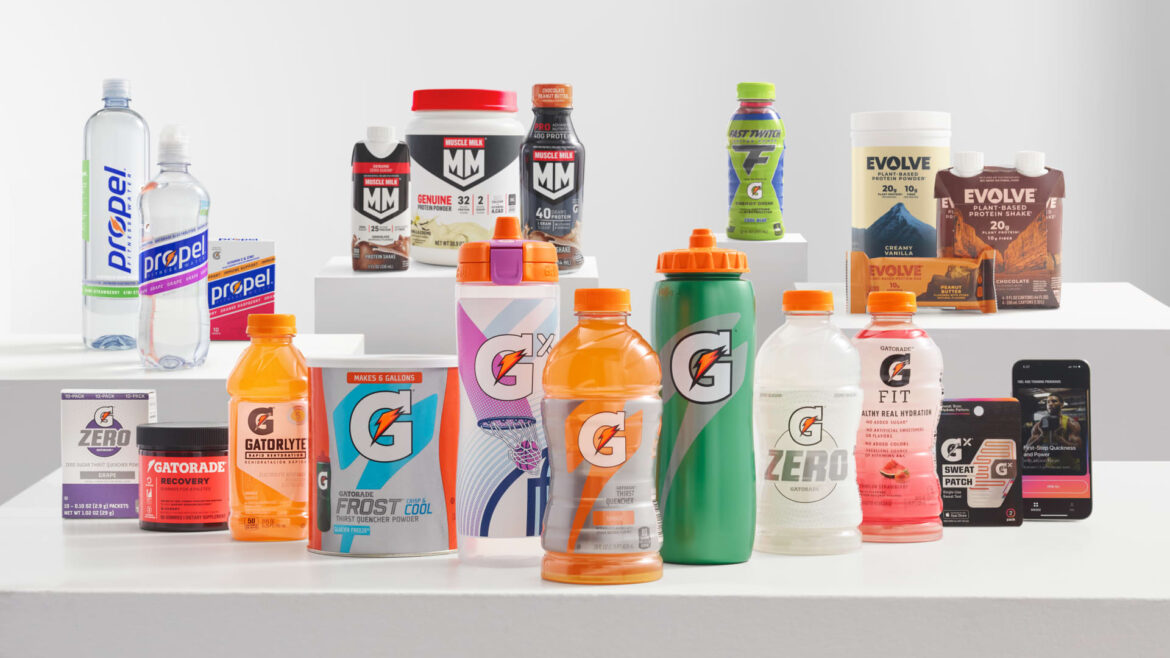 In the last 12 days of April, the stablecoin sector expanded by $4.46 billion, reaching a current valuation of $155.86 billion. Additionally, the top five dollar-pegged cryptocurrencies experienced an increase in their supplies over the last 30 days. Top Dollar-Pegged Cryptos See Growth Amid April’s First 12 Days As of Friday, April 12, 2024, the […]
In the last 12 days of April, the stablecoin sector expanded by $4.46 billion, reaching a current valuation of $155.86 billion. Additionally, the top five dollar-pegged cryptocurrencies experienced an increase in their supplies over the last 30 days. Top Dollar-Pegged Cryptos See Growth Amid April’s First 12 Days As of Friday, April 12, 2024, the […]
Source link
Expands
Circle expands support for Solana as it becomes top network for cross-border payments

Circle is expanding its Web3 Services and Tools suite to Solana to enhance USDC’s accessibility for developers and enterprises, ensuring easy integration into various applications.
The move comes after an AllianceBernstein research report revealed that Solana has become the most popular network for stablecoin transfers, especially for cross-border payments.
Circle aims to improve USDC’s accessibility for developers and enterprises, ensuring easy integration into various applications. The initiative will allow businesses to use APIs to integrate secure wallets, manage on-chain transactions or smart contracts, and streamline user onboarding and transaction flows.
Circle’s official announcement expressed excitement about partnering with Solana’s dynamic developer community and businesses to develop and launch innovative applications.
Stablecoin dominance
This development occurs against a backdrop of significant growth in the stablecoin market, with USDC’s supply experiencing a nearly 10% increase in the last month.
Amid these developments, a report from AllianceBernstein has positioned Solana ahead of Ethereum in terms of stablecoin payment volume, highlighting its emergence as the preferred medium for stablecoin transactions.
The report, penned by analysts Gautam Chhugani and Mahika Sapra, emphasizes the resurgence of stablecoin usage in the current bull market, with Solana leading in cross-border payments using stablecoins.
Remarkably, Solana has captured a dominant 43% market share in the value of stablecoins transferred, significantly outpacing Ethereum, as per Artemis’ data, which recorded Solana’s stablecoin transfer volume at $63.6 billion against Ethereum’s $26.6 billion.
On-chain data shows that Solana’s market share in stablecoin transfers amounted to $1.4 trillion in March, more than 2x Ethereum’s $635 billion.
However, Ethereum still holds a higher market cap of stablecoins on its blockchain, but much of its capital remains unused. Bernstein analysts noted that although Solana has overtaken Ethereum in value transferred, it faces significant scalability challenges, especially for consumer payments.
Circle’s decision to extend Web3 service support to the Solana blockchain showcases confidence in Solana’s ability to overcome its current challenges and reflects a broader commitment to leveraging stablecoins for a more open and inclusive financial system.
The post Circle expands support for Solana as it becomes top network for cross-border payments appeared first on CryptoSlate.
As Gatorade approaches its 60th birthday, the brand is staying spry, branching out into new categories from unflavored water to energy drink mixes.
Since its founding in 1965, Gatorade has been the dominant sports drink. It accounted for 63.5% of the U.S. sports drink market in 2023, according to Euromonitor International data.
Owner PepsiCo’s archrival Coca-Cola takes the second and third slots with Powerade, a perennial No. 2 choice to Gatorade, and Bodyarmor, a newer addition to its portfolio. But combined, Coke’s two brands account for only about a quarter of the U.S. sports drink market. Last year, Pepsi reorganized its portfolio to house Propel, Muscle Milk and other fitness-related brands under the Gatorade name.
But Gatorade’s dominance doesn’t mean that it can rest on its laurels. As more competitors enter the market, the brand has tried to reinvent itself.
“There’s probably been more change in the industry in the last five years than there was 20 years before,” said Rabobank beverage analyst Jim Watson.
Pepsi’s rivals are looking to steal its market share as they branch into new products. Unilever bought drink mix company Liquid I.V. in 2020 for an undisclosed amount; Gatorade’s individually packaged hydration powders resemble the upstart’s. Nestle Health Science bought hydration tablet maker Nuun in 2021, the same year that Coke bought Bodyarmor.
With Coke’s acquisition of Bodyarmor, it bought a brand that could price its sports drinks higher, thanks to its marketing as a healthier option. Coke’s other sports drink, Powerade, is typically cheaper than Gatorade, appealing to consumers looking for a deal.
“That means they have a different and better story to tell the retailers to try to get more shelf space and to take some of that from Gatorade,” Watson said. “That’s where Gatorade has to come up with all kinds of new innovations so they have a new story to tell the retailers so they keep all of their shelf space.”
Even smaller brands without the firepower of Coke or Unilever have been putting pressure on Gatorade. PepsiCo CEO Ramon Laguarta called out influencer Logan Paul’s Prime Energy as one brand stealing share from Gatorade.
“It is true that the emergence of Prime in the category took some share from Gatorade, [though] less than other brands in the category or less proportionally to the size of the brand,” he said on the company’s third-quarter conference call in October, adding that Prime’s market share weakened as summer turned to autumn.
Gatorade’s market share should improve this year but will likely still fall from the prior year, according to a Citi Research note from February.
Gatorade President Mike Del Pozzo told CNBC that the competition is good for the category overall – and shows his brand’s own strength.
“There’s plenty of loud voices right now, trying to make a name for themselves,” said Del Pozzo. “This is a competitive business, and because we’re in the business of sports, we love competition. Clearly, we’re winning, and I think many of them are spending more time on talking about us and less about their own brand, the consumer approach.”
For its part, Gatorade has been thinking about its own pitch to consumers. Del Pozzo said that the line between hydration and wellness has blurred, and more consumers are focused on hydrating throughout their day, not just during exercise.
They now like low- or no-sugar drinks, “functional” beverages that tout health benefits like improving immunity and alkaline water, he said.
Gatorade has responded by branching out with new products: Gatorade Zero Sugar, tablets with vitamin C and zinc for immune support, a Pedialyte lookalike called Gatorlyte, a caffeinated spinoff called Fast Twitch and its first unflavored alkaline water, which launched nationwide in February.
“It’s off to a great start so far, but we were super patient to get it right,” Del Pozzo said about Gatorade Water, which has about a fifth of the electrolytes found in classic Gatorade.
Year to date, Gatorade is gaining share in every hydration category it has products, according to market research firm Circana. And Propel’s annual sales are projected to cross $1 billion for the first time this year, Del Pozzo said.
Gatorade’s long history has given the brand the ability to step into new categories and blur the lines, according to Rabobank’s Watson.
“This is one of the brands that has the best marketing campaigns, such great brand equity, consumer awareness, consumer love,” he said.
For now, classic Gatorade remains the brand’s top seller.
India’s Digital Rupee Expands: Non-Banks to Offer Central Bank Digital Currency Wallets
 India’s central bank has announced that it will enable non-bank payment system operators to offer central bank digital currency (CBDC) wallets. Noting that “necessary changes will be made to the system to facilitate this,” the Reserve Bank of India (RBI) said the initiative is expected “to enhance access and expand choices available to users.” Non-Bank […]
India’s central bank has announced that it will enable non-bank payment system operators to offer central bank digital currency (CBDC) wallets. Noting that “necessary changes will be made to the system to facilitate this,” the Reserve Bank of India (RBI) said the initiative is expected “to enhance access and expand choices available to users.” Non-Bank […]
Source link
Hong Kong SFC expands violations list adding MEXC for unlicensed operations

Hong Kong financial regulator, the Securities and Futures Commission (SFC), issued a public warning about MEXC’s unlicensed operations within its jurisdictions.
SFC stated:
“The entity purports to be a virtual asset trading platform operating at the above website. It has been targeting Hong Kong investors but is not licensed by the Securities and Futures Commission.”
Consequently, the platform has been added to Hong Kong’s list of suspicious virtual asset trading platforms, including other notable crypto firms like ByBit.
Local laws violation
Per the SFC, MEXC’s operation in the city-state violated local laws.
According to the SFC:
“Under the Anti-Money Laundering and Counter-Terrorist Financing Ordinance, it is an offence to carry on a business of providing a virtual asset service (ie, operating a virtual asset exchange) in Hong Kong and/or actively market such services to Hong Kong investors without a licence.”
This is not the first time the SFC has issued a public warning related to the MEXC exchange. Earlier in the year, the regulator stated that scammers were pretending to be from the crypto trading platform and luring unsuspecting victims into participating in what appears to be a crypto investment scam.
The scammers used links with addresses that start with “MEXC” and end in random letters, similar to phishing links.
As such, the SFC said it may pursue regulatory action against the platform if necessary.
“The SFC will not hesitate to take enforcement action against unlicensed activities where appropriate,” it added.
Meanwhile, the financial regulator warned crypto investors against trading on unregistered platforms, adding that they risk losing their investment if the platform experiences any form of failure.
SFC’s MEXC warning is unsurprising, considering the financial watchdog recently ended its registration window for crypto firms to apply for licensing to operate within the Asian city-state. Unregistered entities must close their businesses by the end of May.
The post Hong Kong SFC expands violations list adding MEXC for unlicensed operations appeared first on CryptoSlate.
Biden’s 2025 budget targets crypto tax loopholes, expands digital asset oversight

The Biden administration released its proposed budget for 2025 on March 11, which includes provisions to implement a series of regulatory measures targeting digital assets.
The proposed rules are expected to generate nearly $10 billion in additional tax revenue by 2025.
Closing loopholes
The new budget proposals specifically target a loophole that has previously allowed wealthy crypto investors to benefit disproportionately. By closing this gap, the administration seeks to create a more level playing field for all investors and increase tax fairness. The measure is part of a broader effort to adapt the nation’s tax code to the modern era of investment and technology.
Moreover, the proposals include a comprehensive approach to digital assets by applying wash sale rules to these assets, addressing related party transactions, and modernizing regulations to treat securities loans as tax-free to include other asset classes. These steps are designed to update the tax system to reflect the unique characteristics and challenges of digital asset transactions.
Furthermore, the budget emphasizes enhancing reporting requirements for financial institutions and digital asset brokers. This adjustment aims to ensure that transactions involving cryptocurrencies are monitored with the same diligence as traditional financial exchanges, thereby increasing transparency and reducing opportunities for tax evasion.
The government also plans to require certain taxpayers to report foreign digital asset accounts, extending the reach of US tax compliance efforts internationally.
Financial details
According to the document, applying wash sale rules to digital assets is projected to raise over $1 billion in tax revenue in the fiscal year 2025 alone.
The budget also states that including digital assets in mark-to-market rules — which mandate the taxation of securities at their current market value rather than their purchase price — is expected to generate an additional $8 billion by the same year.
The proposal also introduces an excise tax on crypto mining operations, reflecting the sector’s rapid growth and relatively minor fiscal contributions, especially considering its environmental footprint.
The proposed excise tax on crypto mining endeavors is forecasted to decrease the national deficit by approximately $7 billion within the same timeframe. While similar tax provisions were proposed in last year’s budget, they faced legislative hurdles and were not enacted by Congress.
Aside from those crypto-related proposals, Biden’s budget broadly advances reduced costs for families, more robust Social Security and Medicare, and higher taxes on corporations and wealthy individuals.
According to CBS, the budget could trim deficits by $3 trillion over a decade while raising tax revenues by $4.9 trillion and allocating roughly $1.9 trillion to various programs.
Mentioned in this article
Latest Alpha Market Report

Amid tightening global crypto regulations, Backpack, a crypto exchange founded by former FTX executives, has broadened its reach to 11 US states, including California, Colorado, Indiana, Missouri, Wyoming, and others.
In a Feb. 21 announcement on the social media platform X (formerly Twitter), the company disclosed its availability to residents within the states above, with CEO Armani Ferrante outlining plans to consolidate the exchange’s presence in the US, saying:
“Today, we beginning our journey to bring Backpack Exchange into the USA. It’ll be slow. It’ll be steady. It’ll be hard. But it’ll be worth it. If we don’t support your state yet, hold on. We’ll get there. This is something that will take years to complete. But we’re committed to doing it right.”
The exchange, currently in its beta phase, facilitates spot trading activities and intends to diversify into derivatives, margin trading, and more as it secures additional licenses globally. It reportedly aims to offer non-custodial-based trading to differentiate itself from traditional crypto exchanges. On Feb. 18, the platform reported $1 billion in daily trading volume.
Backpack was co-founded by Can Sun, former general counsel at FTX, and Ferrante, previously a software developer at Alameda Research.
Sun played a pivotal role as a witness in Sam Bankman-Fried’s trial, revealing that he had no idea the former billionaire was misusing customers’ funds. Ferrante’s crypto infrastructure company, Coral, suffered a loss of $14.5 million due to FTX’s abrupt collapse. FTX Venture reportedly spearheaded a $20 million funding round for Coral mere weeks before the collapse.
Backpack’s licensing
The Backpack Exchange platform boasts multiple licenses across global jurisdictions, including the United Arab Emirates (UAE), Lithuania, Australia, and the United States.
The US Financial Crimes Enforcement Network’s records indicate its initial registration as a Money Services Business (MSB) in numerous US states. Furthermore, it’s duly registered with the Australian Transaction Reports and Analysis Centre (AUSTRAC) as a Digital Currency Exchange (DCE) provider.
In the UAE, it holds accreditation from the Dubai Virtual Assets Regulatory Authority (VARA) as a Virtual Asset Service Provider (VASP). Additionally, it’s registered as a Virtual Currency Exchange Operator and Deposit Virtual Currency Monetary Operator with the Lithuanian Financial Crime Investigation Service (FCIS).
On January 11, crypto exchange Coinbase unveiled its partnership with Yellow Card, the largest and first licensed Stablecoin on/off ramp on the African continent, to expand the access of their products to emerging economies across the African continent.
Expansion To Emerging Economies
Coinbase will expand access to its products through this new partnership with Yellow Card, starting with 20 African countries. They will provide millions of African users access to USD Coin (USDC) on the Coinbase Wallet and the Yellow Card app.
Both partners expect to “increase economic freedom” in many of these countries, whose economies have suffered from high inflation and remittance dependency and the lack of a modern financial system vastly sought by the younger generations. As they state in their press release:
Young people are more likely to recognize the benefits of crypto: more than seven in 10 crypto owners globally (72%) are under age 34.
Their Plan To Make The Global Financial System “More Accesible”
To achieve opening access to a more modern and global financial system, they will facilitate access to USDC on Base for cheaper fees and faster transactions than traditional transfers starting in February 2024.
In the Coinbase Wallet, users will be able to purchase USDC directly from their Wallet app, as well as sending USDC without any fee to messaging and social media apps, as they noted:
Coinbase Wallet users will be able to easily send USDC without fees on any platform where they can share a link — including messaging apps like WhatsApp, iMessage and Telegram, and through popular social media apps and email.
Users of the Yellow Card’s platform can purchase USDC on Base and transfer through the L2 blockchain, benefiting from cheaper fees and easy access to the stablecoin, too.
Chris Maurice, Co-Founder and CEO of Yellow Card, expressed his excitement in an X (formerly known as Twitter) post. Maurice is optimistic about the future of the partnership and the solutions it might bring to African people and businesses.
Beyond excited to bring @coinbase to Africa! 🎉🌍
Stablecoins like USDC solve real problems for real people & businesses on the continent.
With @yellowcard_app‘s regional expertise and Coinbase’s global brand and infrastructure, we will empower the next one billion people.
— Chris Maurice⚜️ (@chrismaurice) January 11, 2024
The partnership aims to protect users’ savings across the African continent from “unstable currencies” and economic volatility due to the high inflation rates of up to 18.5%.
They will offer lower remittance fees, with the maximum fee being 2%. As well as offering access to the global financial system to small and medium enterprises (SMEs) by allowing merchants to set up a Wallet in less than a minute and broadening their growth.
In summary, the Coinbase and Yellow Card partnership will expand solutions for people and businesses in 20 African countries by making the global financial system more accessible.

Coinbase (COIN) is currently at $132.85 on the daily chart. Source: COINUSD on Tradingview.com
Featured image from Unsplash, Chart from TradingView.com
Disclaimer: The article is provided for educational purposes only. It does not represent the opinions of NewsBTC on whether to buy, sell or hold any investments and naturally investing carries risks. You are advised to conduct your own research before making any investment decisions. Use information provided on this website entirely at your own risk.
Hut 8 expands borrowing capacity with Coinbase to $65 million, acquires natural gas power plants

Bitcoin miner Hut 8 has secured an additional $15 million from a subsidiary of the United States-based cryptocurrency exchange, Coinbase, according to a Jan. 12 statement.
The miner revealed that the new deal represents an amendment and restatement of its previous $50 million credit facility with the cryptocurrency trading platform, bringing its cumulative credit portfolio to $65 million.
Last year, Hut 8 procured a $50 million credit facility from Coinbase, with an added provision for an optional $15 million term loan.
The BTC miner plans to use the newly acquired $15 million loan for general corporate purposes, mirroring the allocation of funds from the preceding financial arrangement. The new loans also carry the same interest rate as the previous ones.
“All amounts borrowed under the Credit Facility will bear interest at a rate equal to (a) the greater of (i) the federal funds rate on the date of the applicable borrowing, and (ii) 3.25%, plus (b) 5.0%.”
Hut 8 further explained that the loan is secured by its interest in an unspecified amount of Bitcoin held in Coinbase Custody, adding that the loan will mature 364 days after the date of the first borrowing.
New natural gas power plants
Meanwhile, Hut 8 recently obtained court approval from the Ontario Superior Court of Justice to acquire four natural gas power plants in Ontario.
The approval empowers Hut 8’s newly established Canadian subsidiary, BidCo, to execute the acquisition of a 40 MW facility in Kapuskasing, a 110 MW facility in Kingston, a 120 MW facility in Iroquois Falls, and a 40 MW facility coupled with a Bitcoin mining operation in North Bay.
Along with the approval, a novel funding arrangement is set to materialize between Macquarie and BidCo. Macquarie partnered with the miner to submit the bid for the North Bay Bitcoin mine.
This financial agreement will manifest as an operating lease facility, with Macquarie securing a 20% stake and Hut 8 retaining an 80% equity interest. The anticipated closure of this transaction is slated for Feb. 15, contingent upon the resolution of all pending litigation claims.
Avalanche Foundation Expands Culture Catalyst Initiative to Embrace Meme Coins
For the planned investments in selected meme projects on the Avalanche network, the non-profit has outlined specific requirements for eligibility in the program.
Avalanche Foundation, the non-profit group overseeing the development of the Avalanche blockchain, has announced its intention to allocate a portion of the Culture Catalyst Funds to support meme coins.
According to a statement on X (formerly Twitter), the move is aimed at acknowledging the cultural and entertaining aspects symbolized by meme coins, with the foundation planning to acquire select Avalanche-based meme coins to build a curated collection.
From NFTs to Meme Coins
The non-profit organization initially rolled out the Culture Catalyst initiative in March 2022 with $100 million funding to propel the adoption of the crypto ecosystem.
At its launch, the program was designed to foster innovation in the non-fungible token (NFT) sector by supporting and empowering creators on the Avalanche protocol.
However, as revealed in a recent announcement on X, a portion of the funds will now be redirected towards targeted meme coins within the network.
The protocol claimed meme coins “go beyond mere utility assets” and stand as a representation of the “collective spirit and shared interests of diverse crypto communities.”
The Avalanche Foundation said the move aligns with its ongoing engagements across the Avalanche blockchain, involving non-fungible tokens, real-world assets, and various undisclosed tokens deployed on the Avalanche ecosystem.
The foundation believes that allocating a portion of the Culture Catalyst fund to selected meme tokens with promising potential will enrich the network’s portfolio, embracing a more comprehensive spectrum of possibilities. This step, according to the group, positions the protocol to accommodate the myriad new forms of creativity, culture, and lifestyle enabled by blockchain technology.
Last year, the Avalanche Foundation launched Culture Catalyst, a program aimed at empowering creators, sparking innovation, and propelling the adoption of blockchains. This initiative seeks to better position Avalanche to cultivate and support the many new forms of creativity,…
— Avalanche 🔺 (@avax) December 29, 2023
Unveiled Requirements for Investments in Meme Projects
For the planned investments in selected meme projects on the Avalanche network, the non-profit has outlined specific requirements for eligibility in the program.
According to the foundation, the selection process for the planned collection will be based on a number of factors, including liquidity thresholds, project maturity, principles of a fair launch, the number of holders, and overall social sentiment.
The non-profit said it is open to supporting diverse and culturally significant initiatives as long as it meets the selection criteria. The group prides itself as an adaptable and inclusive participant in the Web3 space.
next
Altcoin News, Cryptocurrency News, News
You have successfully joined our subscriber list.










